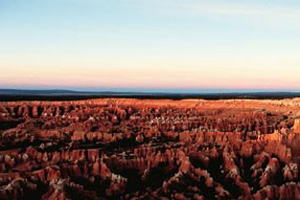Desertification is the persistent degradation of dry land ecosystems (arid, semi-arid and sub-humid), as a result of climate variations and human activities.
Among human practices that contribute to desertification are cultivation, overpasturing, deforestation and excessive artificial irrigation.
Among the causes that are due to the natural process of climate change we find, for example, desert advance in times of drought, and desert retreat in times of abundant rain.
Desertification threatens the subsistence of a billion people, as it makes water scarcer and limits crop production, grazing, logging and other benefits that these ecosystems supply to man. This is especially true in the case of sub-Saharan and central Asian dry lands.
It’s worth noting that desertification could be a possible consequence of what could happen with highly intervened habitats (non-desert) where the ground has been highly degraded.
Danger factors
Various factors have an influence on the problem of desertification. These are dependent on a variety of physical characteristics (which include climatic characteristics) and the way the land is used in a specific place. Some of these factors are:
– Wind: this is a climatic factor that can intensify desertification in diverse ways. Its force can erode, transport and deposit particles from the ground or from rocks that shape the ecosystem. Also, in dry zones, wind can cause dune formation, although dunes can exist in environments not prone to desertification (such as coastal zones).
At the same time, wind patterns can change drastically under the influence of the activities of man, such as when vegetation (especially woody) is added or eliminated. This vegetation acts as a barrier and provides shade.
– Land use: among the causes of desertification related to ground use are the over pasturing of cattle and wild animals, the use of fire for agricultural work, forest fires, construction activities and some crops.
– The shape of the terrain: there are factors related to terrain which can cause desertification. These are the degree of slope and the depth of the phreatic zone (subterranean water layer which is the closest to the ground surface). The first is important because it influences the velocity and quantity of the water current on the surface (the discharge is greater if the slope of the hill is more pronounced). It also intervenes in the quantity and intensity of solar light that a certain place receives.
The second becomes important when the phreatic zone is very deep, plant roots cannot obtain the available moisture, and they die. On the other hand, if the phreatic zone is very close to the surface, flooding will be a problem, as in these zones saline and alkaline conditions can kill vegetation and slow its growth.
Consequences of desertification
The principal consequences that desertification involves are:
– Diminishing resistance of dry lands and their resources: although the ground, vegetation and fresh water have a strong resistance in their normal conditions (that is, they can recover after a drought or an aggressive human activity such as cultivation), after being degraded by a growing desertification, they have each time less possibility of recovering.
– Diminishing dry land productivity: wind blows away the surface layer of dry lands, eliminating necessary nutrients and limiting the number of plants that can develop. This can cause a decrease in food production in many affected zones, consequently increasing malnutrition and hunger (especially in the African continent).
- Effect on the population that lives on the outskirts of areas with desertification: desertification can diminish water quality and increase river and lake sedimentation. It can also cause dust storms, worsening health problems (eye infections, respiratory illnesses and allergies) or damage infrastructure and appliances, such as cars and agricultural machinery.
Desertification around the world
Desertification is a phenomenon which extends throughout all the dry land zones in the world, especially Africa.
According to studies, it is estimated that approximately one-fourth of Latin American and the Caribbean are composed of dry lands and deserts. In fact, the Caribbean states of the Dominican Republic, Cuba, Haiti and Jamaica have arid zones that are eroding increasingly every day. This is also the case with deserts along the Pacific coast of Latin America (which extend from the south of Ecuador all along the Peruvian Coast until reaching the north of Chile) and the Andean high plains, which are located more in the interior (between 3,000 and 4,000 meters above sea level) and cover large extensions of Peru, Bolivia, Argentina and Chile.
In Africa, deserts or arid lands constitute close to half of the continent. The former have been adapted for use in cultivation, but in recent times a great part of them have deteriorated as a result of these uses and prolonged droughts.
In Europe, especially in northern Mediterranean countries such as Spain, Italy and France, the degradation of terrain is frequently associated with agricultural use. As a result, the land is salinated, it dries, and it becomes infertile and unproductive, causing desertification. In Asia, desertification assumes different forms throughout the continent. Of a total 4,3 billion hectares of terrain, close to 1,7 billion are dry lands. Among the degraded zones are the dunes of Syria, the mountains of Nepal and the deforested mountain ranges of Laos.








